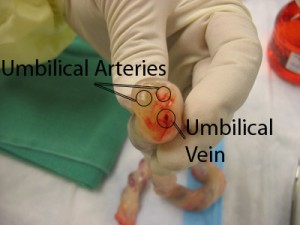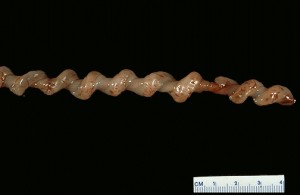Living on the east coast of the United States, NYC precisely, one will not find so many women opting for leaving the umbilical cord attached until it falls off the baby naturally. Â I find it fascinating, and there are parts of the U.S. as well as around the world where it is a natural custom or personal choice. Â Here is a story of a progressive Hospital that is ‘waking up’ to the idea that MAYBE it might actually be a good thing.
 PREGNANCY – PART – Paediatrics   21/4/2009
PREGNANCY – PART – Paediatrics   21/4/2009
 Lotus Birth: born naturally. In Turin
Lotus Birth: born naturally. In Turin
In Turin, the first major hospital that gave birth to a baby … with the placenta. The opinion of the expert and the testimony of mothers
LUIGI WORLD OF THE PRINCE AND STEFANIA
Birth in water, painless childbirth, epidural anesthesia are all terms that expectant mothers feel appoint at least once. Instead of a period which speak little or no thirst and “second nature.” And it is likely that almost none has ever been asked how it wishes to happen, the second, or the final phase of childbirth, which consists in the expulsion of the placenta.
But there’s something new and, although not yet become a routine practice, many parents are already experiencing the second natural birth or the placenta or the “Lotus birth.
According to experts, is the most gentle and less traumatic to bring to light a child.
The method is very simple and is to leave the placenta attached to the baby for a few days (on average 3 or 4) until natural detachment. This gradual separation could provide the child, even a small amount of placental blood useful for the formation of the immune system.
“We know that the placenta is formed from the division of the same cells that form the fetus, then baby and placenta have the same DNA. Lotus Birth is the birth that deeply respects the importance of this union’s biological child with her placenta, “explains Susanna Swapana Hinnawi, Breathworker and Counselor ICC (Inner Child Codependency). Referee for Italy’s birth Lotus Birth.
placenta have the same DNA. Lotus Birth is the birth that deeply respects the importance of this union’s biological child with her placenta, “explains Susanna Swapana Hinnawi, Breathworker and Counselor ICC (Inner Child Codependency). Referee for Italy’s birth Lotus Birth.
“In the Lotus Birth, in fact, the umbilical cord is cut, but expects that detaches itself from the navel when the child is ready for separation.” Susanna Hinnawi Continue “on average, the wait is three to four days . When the cord comes off spontaneously, the umbilicus does not need medication or special care, it is tightly closed and healed, in times less than when severed the umbilical cord. ”
What are the benefits of this mode of delivery? We ask Susanna
“It’s hard to have to summarize in a few words … Speaking from a physiological point of view, the connection to the placenta causes the baby receives all the rich oxygenated blood, important for the proper development of organs still immature at this delicate stage of adjustment. When the cord is cut in the opening minutes, the placenta remains to be third to 50% of the blood that should go to the baby! Another aspect to consider is that of breathing, being under the pulmonary system a perfect autonomy, continues to be from two sources in parallel: the placenta and lungs. Then, if the cord is cut, we avoid separating the child from his birth mother, a union which must absolutely be preserved! But what struck me most is the emotional and psychological. Training for staff believe that birth is the cornerstone on which to build their lives. Born without trauma, in a respectful and friendly is definitely a good start on which is easier to develop aspects of character of completeness and integrity. Keeping together the biological unit formed by the baby and placenta, avoiding any kind of injury, both physical and emotional. If we are not “wounded,” we are at peace. There are no scientific studies demonstrating the benefits of Lotus Birth, but from what I started to notice, children born without cutting the cord, show generally a strong immune system, a pronounced tendency to socialization and autonomy . Someone called them “beings complete. Moreover there are many studies showing how important it is to delay cutting the cord until the end of the pulse, well, the Lotus Birth is merely an extension of this delay that is safe, but, rather, brings additional benefits.
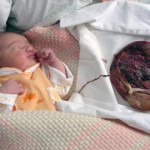 So the Lothus Birth should not be seen as a particular technique to be used during  childbirth, but a conscious and responsible choice that guarantees health and  wealth to the unborn.
So the Lothus Birth should not be seen as a particular technique to be used during  childbirth, but a conscious and responsible choice that guarantees health and  wealth to the unborn.
“I would point out that this mode must be understood as a piece in the mosaic that  makes up a responsible choice of birth ‘points Suanna Hinnawi” A birth in which the  woman picks up herself, is in contact with your body, with its emotions and fears,  has chosen to be with his child, the only protagonist. An event that should not be  delegated to anyone except her ability to procreate mammal: so from spectator to player, from lamb to lioness! After this introduction, the Lotus Birth may also occur after a cesarean section, in all those conditions in which the placenta is healthy and there are no other impediments. Indeed, after a caesarean, as well as a premature baby, it would be more desirable because it provides an excellent support to the respiratory system that in both cases is greater compromise. ”
We understand that in Italy is a technique almost unknown, there are other countries where it is practiced more often?
“In Italy the Lotus Birth was introduced in 2004, when it was translated and published the book in Australia” Lotus Birth: the integral, born with the placenta. ” In recent years, our association has been working to publicize this way of coming into the world maybe a little ‘unusual, but certainly natural, and above all no contraindications. Children are born in our homes, maternity homes and even in those hospitals where doctors “enlightened” or maybe even just curious, have allowed to happen. In Australia and Canada is a very common mode since the end of the ’70s.
Lotus Birth may be required in an Italian hospital?
“The hospitals have their protocol from which hardly differ. However, as I said above, some doctors are particularly sensitive, especially in structures of the province, have accepted the Lotus Birth, into the protocol in a hospital official.
particularly sensitive, especially in structures of the province, have accepted the Lotus Birth, into the protocol in a hospital official.
The paradox is that although there are no scientific studies that demonstrate the need to cut the umbilical cord, the failure to cut it often needs to be proven scientifically! I welcome the availability of wanting to start a search, unfortunately, are funds that fall outside our capabilities. ”
It is true that one of the first hospitals to test the technique Lotus Birth was the Sant’Anna di Torino?
“Not really. The Sant’Anna di Torino was perhaps the largest hospital in which both happened. Moreover, thanks to a very tenacious and determined mother, the first Lotus Birth was in 2006 in a hospital in the province of Mantua. Despite initial resistance imaginable, now this is one of the public in which it can take birth.
To make us even more aware of what is the Lotus Birth. We ask those who have experienced directly and that Eusebius Prabhat and Monica Farinella, parents of small Deva was born December 16, 2008 right in the Sant’Anna di Torino.
Before you try this new experience, you had a little ‘fear or any doubt?
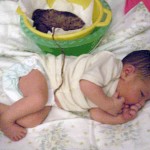 “The first time we heard about the Lotus Birth was during the course of our pre-  natal eldest Munay, midwives have referred to this technique, namely the ability to  not sever the umbilical cord and leaving the child attached to the placenta, until  natural detachment. For us it was immediately clear that the party had done with  this mode, bought and read the book I had no doubt or fear in wanting to run the  integral part. ”
“The first time we heard about the Lotus Birth was during the course of our pre-  natal eldest Munay, midwives have referred to this technique, namely the ability to  not sever the umbilical cord and leaving the child attached to the placenta, until  natural detachment. For us it was immediately clear that the party had done with  this mode, bought and read the book I had no doubt or fear in wanting to run the  integral part. ”
What sensations did you feel with the Lotus Birth?
“Around the baby in those days is a feeling of sacredness, all emotions are amplified, the strongest feeling is to assist the mystery of creation in a way that reflects and respects the time of life and nature, since in last 100 years, the event of birth was completely “industrialized” to the paradox of planned caesarean. The two cases are differentiated by Lotus in the duration of the days when the cord is still attached to the placenta, Munay let go of her placenta between the 6th and 7th days, Deva between the 3rd and 4th. ”
And the Sant’Anna hospital staff? There was skepticism on the part of doctors?
“Rather than skepticism, we would say ostracism. The new, if it is not known scares. Our civilization is founded on dogmas at all levels, suffice it to say that the hospital protocol the placenta is considered a refusal and not an organ, where there is not sold (but that’s another story). The amazing thing is that the medical director of a company as the S. Anna, talking in terms of ownership of the placenta, to my question, but you can not deny the biological origin of the placenta, as a result of insemination sperm / ovum has not been able to answer, the answer is that the logic can shatter any dogma, then we realize the opening of minds and accept new truths.
founded on dogmas at all levels, suffice it to say that the hospital protocol the placenta is considered a refusal and not an organ, where there is not sold (but that’s another story). The amazing thing is that the medical director of a company as the S. Anna, talking in terms of ownership of the placenta, to my question, but you can not deny the biological origin of the placenta, as a result of insemination sperm / ovum has not been able to answer, the answer is that the logic can shatter any dogma, then we realize the opening of minds and accept new truths.
Eventually, after more than two hours of discussion, we came out tonight with Girls and placenta, and a historic declaration by a hospital, a certificate stating that a health worker can not sever the umbilical cord without parental consent, statement written that actually opens a new way to natural childbirth. Thanks S. Anna.
The birth occurred even without the aid of oxytocin, monitoring, epidural, episiotomy, antibiotics, the delivery room couch, pushed manuals, etc.. because a choice like this?
“The party, as for the first child has been without outside intervention. The woman does not feel and no longer knows his body, or rather, knows only through the models of media, lifting and correction in a meaningless race against time. For generations, childbirth is seen as an agonizing suffering, when the best thing would be to be able to experience together with operators who know the rhythms of nature, women are able to help a pregnant woman to be aware that childbirth is not a ‘ operation, and that all women, with a working knowledge about themselves, and a proper preparation (mental and physical) can have a natural birth without medical intervention. Should allow time to the woman and the child to feel and communicate with each other, and having close of discreet … the rest takes place naturally. ”
After your experience, is there anything you feel to inform readers of “LaStampa.it?”
“What our experience is told in a free book download from www.bambininuovi.com. The greatest contribution we can make to humanity and the best gift we can do for our children is closer to the pregnancy with a deep sense of respect for the mystery that is, knowing that only our ability to inform and to choose the path fewer artifacts, and our courage, can make a difference. What we as humanity is the result of what we have tried so far, let’s try something new and waiting … waiting for the results read, informiamoci, seeking new ways to be born and to live accordingly. ”
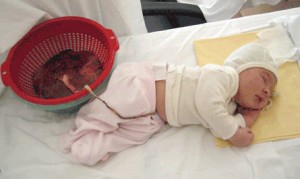 For more information:
For more information:
Websites:
http://www.lotusbirth.it/
http://www.partonaturale.org/parto/lotusbirth.php
www.bambininuovi.com
Events
“Laboratory of birth – meetings and stories”
1 to 3 May 2009, at Officinale, in the park of Castle Belgioioso (Pavia), on the topic of birth with the experts.
Every story of birth is unique and special and teaches us something. For this association CHILDBIRTH, Lotus Birth Italy along with the National Association of midwives for childbirth at home and BambiGioi organized three days to deepen various topical issues in the world of birth.
Books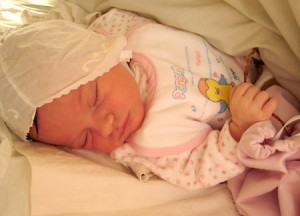
“Lothus Birth: the integral, born with the placenta” – by Shivam Rachana – Amrita Editions
E-book: http://www.bambininuovi.com/nascita_armoniosa.pdf
Videos
Breast-feeding to the Breast but… also INTEGRAL BIRTH, with the Placenta – “LOTUS BIRTH†– Part 6 ( In Italian)
(Allattamento al Seno ma… anche NASCITA INTEGRALE, con la Placenta – “LOTUS BIRTH” – Parte 6)
 During this period before it does fall off, parents clean, salt and  wrap the placenta, usually in a cloth diaper. This option is not  offered in hospitals and some hospitals don’t even allow the  parents to take the placenta home.
During this period before it does fall off, parents clean, salt and  wrap the placenta, usually in a cloth diaper. This option is not  offered in hospitals and some hospitals don’t even allow the  parents to take the placenta home. birthing, a more extreme version of delayed cord clamping.
birthing, a more extreme version of delayed cord clamping. Chicago attorney Leonard Hudson and his wife Gayle  Hudson, a stay-at-home-mother, said they discovered lotus  birthing on a Web site.
Chicago attorney Leonard Hudson and his wife Gayle  Hudson, a stay-at-home-mother, said they discovered lotus  birthing on a Web site.













